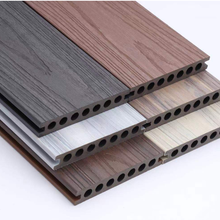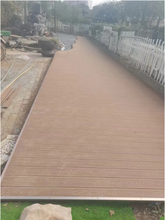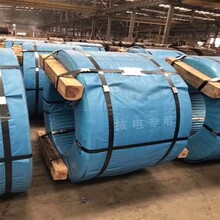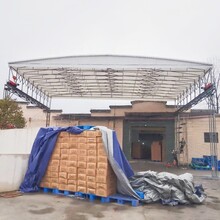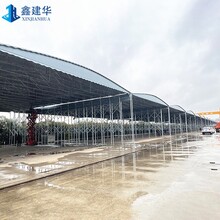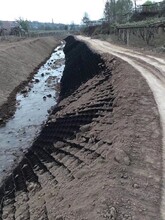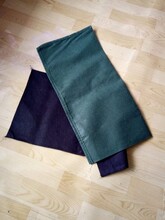Guangxi Chemical coated steel pipe, plastic coated pipe
The epoxy coal tar pitch anticorrosive coating consists of two main components, epoxy and coal tar pitch. It is a two-component coating of A (epoxy) and B (curing agent). It has excellent adhesion, tenacity, moisture resistance, water resistance, and chemical resistance. It has the performance of preventing various ions from passing through the paint film, and has the same expansion and contraction characteristics as the coated object. The paint film never falls off or cracks. The thickness is 0.5~1.0mm. Epoxy coal tar pitch is a kind of anti-corrosion form with high cost performance ratio. Engineering practice shows that epoxy coal tar pitch plus cathodic protection is used. Oil and gas pipelines have been used for 20 years without corrosion. The components are epoxy coal tar pitch primer and topcoat, which are made of epoxy resin and coal tar pitch as the main film-forming materials, adding various antirust pigments, insulating fillers, toughening agents, leveling agents, thinners, anti settling agents, etc. The component B is made of modified amine curing agent or curing agent as the main material, adding pigments and fillers. When selling this product, components A and B are supplied together. During construction, they are mixed in proportion and used up within the specified time after mixing evenly. This product is an anticorrosive coating with smooth, dense, hard coating, strong adhesion, salt and alkali resistance, seawater resistance, soil microbial corrosion resistance, and plant root penetration resistance. The composite use of coating and glass fiber cloth can enhance the mechanical properties of anti-corrosion coating.
Normal temperature coating, natural curing, simple construction, manual or mechanical construction, especially suitable for on-site use.
Three oil and two cloth anti-corrosion steel pipe manufacturer introduces the function picture of cloth. The role of three oil and two cloth anti-corrosion steel pipe is introduced by the manufacturer. The process of three oil and two cloth anti-corrosion steel pipe is: fully coated with a layer of anti-corrosion oil and wrapped with a layer of glass cloth. Then apply a full layer of anti-corrosion oil, wrap a layer of glass cloth, and then apply a full layer of anti-corrosion oil, three oils and two cloths in total. The function of the cloth is mainly to increase the tension of the anticorrosive coating and prevent the cracking and water seepage of the anticorrosive oil after hardening. One cloth and two oils are what we call epoxy coal tar pitch anti-corrosion steel pipes. Common anti-corrosion steel pipes are one cloth and two oils, three oils and two cloths, five oils and three cloths, and seven oils and four cloths. The components of epoxy coal tar pitch anti-corrosion spiral steel pipe are epoxy coal tar pitch primer and finish paint. Both of them are based on epoxy resin, which is to exchange sincerity for sincerity and win customers with service. Users are not satisfied with our work. Users are satisfied with our work and we need to do better. Earnestly serve to gain the support and trust of our customers, and seek thousands of customers. IPN8710 anti-corrosion spiral steel pipe which is better, Ruisheng pipe more!
There are many kinds of corrosion media in the water supply pipeline, including acid, alkali, salt, oxidant and steam. The coating is chemically inert and resistant to acid, alkali and salt corrosion. The coating film should be compact in structure, good in waterproof permeability, strong in adhesion and tenacity. The product is a chemical reactive coating, which is packaged in two components. Component A is resin and initiator, and component B is active monomer and catalyst. Therefore, before use, the two components shall be weighed and proportioned according to the specified important proportion, mixed evenly and cured for 30 minutes according to the specified time before construction. The cured paint shall be used up within 6-8 hours to avoid cementation waste. The ratio is as follows: primer: component A: component B=1 barrel: 1 barrel. Please strictly follow the required proportion (or construct according to the proportion notified by the manufacturer at that time) of the finish paint, component A: component B=1 barrel: 1 barrel. Please apply one coat of paint in strict accordance with the required proportion (or according to the proportion notified by the manufacturer at the time), and then wait for more than 24 hours before applying the paint. After the paint is used, the lid of the packaging barrel shall be tightly sealed, otherwise it is liable to deteriorate due to moisture, alcohol and water. After the paint film is applied at normal temperature, it can be put into use after 7-10 days of drying at normal temperature.
PN8710 drinking water anti-corrosion coating is a kind of drinking water coating with good anti-corrosion performance. Rust proof, odorless, after curing. The film is compact in structure, good in waterproof permeability, strong in adhesion and tough in film. IPN8710 primer: composed of polyurethane polyethylene, modified epoxy resin, anti rust pigments and fillers, additives, etc., cured at room temperature to form an interpenetrating network, with dense film structure, acid, alkali, salt resistance, anti rust performance, and strong adhesion. IPN8710 finish paint: it is composed of epoxy, rubber resin modification, anti rust pigments and fillers, additives, etc. Chemical resistance, anti microbial erosion. Coating method: brush coating or high-pressure airless spraying Application: IPN8710 primer is used for anti-corrosion priming coating of the inner wall of drinking water pipeline; IPN8710 topcoat is used for anti-corrosion topcoat of the inner wall of water supply pipeline. Scope of application: used for anti-corrosion of drinking water tank, inner wall of water transmission pipeline, oil pipeline, gas pipeline, sewage pipeline, etc.

Product introduction of epoxy coal tar pitch anticorrosive steel pipe: it is divided into epoxy coal tar pitch primer and finish, which are made of epoxy resin and coal tar pitch as the main film-forming materials, adding various antirust pigments, insulating fillers, toughening agents, leveling agents, thinners, anti settling agents, etc., and component B is made of modified amine curing agent or curing agent as the main material, adding pigments and fillers. When selling this product, components A and B are supplied together. During construction, they are mixed in proportion and used up within the specified time after mixing evenly. The epoxy coal tar pitch anti-corrosion spiral steel pipe is what we often call "several cloths and several oils". The common ones are "one cloths and two oils", "three cloths and two cloths", "three cloths and four oils", "three cloths and five oils", "six oils and two cloths", and "four cloths and six oils". The components of epoxy coal tar pitch anticorrosive spiral steel pipe are epoxy coal tar pitch primer and finish, which are made of epoxy resin and coal tar pitch as the main film-forming substances, adding various antirust pigments, insulating fillers, tougheners, leveling agents, thinners, anti settling agents, etc. Appearance: the primer is iron red in component A, black in component B, and the finish is black. It has chemical medium corrosion resistance and good physical and mechanical properties, good adhesion, tough coating film, and some electrical insulation and permeability resistance, stray current resistance and microbial erosion resistance. After the film is formed, the number of construction passes can be reduced. The main executive standards are SY/T0447-96 Technical Standard for Epoxy Coal Tar Anticorrosive Coating of Buried Steel Pipeline and SY/T0457-2000 Technical Standard for Internal Anticorrosive Coating of Liquid Epoxy Coating of Steel Pipeline. It is mainly used for corrosion prevention of the outer wall of buried or underwater steel oil, gas, water and heat supply pipelines, as well as for corrosion prevention of various steel structures, wharves, ships, sluices, gas storage tanks, equipment in refineries and chemical plants, and waterproofing and leakage prevention of concrete structures such as concrete pipes, sewage pools, roof waterproof layers, toilets, basements, etc. Three cloths and five oils are mainly applied in SY/T0447-96 Technical Standard for Epoxy Coal Tar Anticorrosive Coating of Buried Steel Pipeline and SY/T0457-2000 Technical Standard for Internal Anticorrosive Coating of Liquid Epoxy Coating of Steel Pipeline. It is mainly used for corrosion prevention of the outer wall of buried or underwater steel oil, gas, water and heat supply pipelines, as well as for corrosion prevention of various steel structures, wharves, ships, sluices, gas storage tanks, equipment in refineries and chemical plants, and waterproofing and leakage prevention of concrete structures such as concrete pipes, sewage pools, roof waterproof layers, toilets, basements, etc. The epoxy coal tar pitch anti-corrosion spiral steel pipe is what we often call "several cloths and several oils". The common ones are "one cloths and two oils", "three cloths and two cloths", "three cloths and four oils", "three cloths and five oils", "six oils and two cloths", and "four cloths and six oils". The components of epoxy coal tar pitch anticorrosive spiral steel pipe are epoxy coal tar pitch primer and finish, which are made of epoxy resin and coal tar pitch as the main film-forming substances, adding various antirust pigments, insulating fillers, tougheners, leveling agents, thinners, anti settling agents, etc. Appearance: the primer is iron red in component A, black in component B, and the finish is black. It has chemical medium corrosion resistance and good physical and mechanical properties, good adhesion, tough coating film, and some electrical insulation and permeability resistance, stray current resistance and microbial erosion resistance. After the film is formed, the number of construction passes can be reduced. The epoxy coal tar pitch anti-corrosion steel pipe has the advantages of high pressure resistance, not easy to be damaged, mature construction technology, supporting various pipe fittings, and high reliability, For many years, it has been a large amount of pipes used in oil field gathering and transmission projects. However, due to the high water cut stage of oilfield development, the corrosion of oil reservoir sewage to pipelines is very serious. According to statistics, the average corrosion rate of metal pipelines in oil and gas gathering and transmission in the oilfield is 1.0~1.7mm/a. Under the effect of certain temperature and pressure, the pitting corrosion rate can reach 13~14mm/a. Even if the steel pipes are internally coated with special paint and externally coated with asphalt, the corrosion is still very serious. Generally, new pipelines will be perforated after half a year of use, and need constant repair and maintenance, It will be replaced after 3 years, which has seriously affected the production of the oilfield. In recent years, many new anti-corrosion pipes have appeared, and their trial in the oil field provides a choice for oil and gas gathering and transmission projects. Epoxy coal tar anti-corrosion steel pipes are mainly used for the external wall anti-corrosion of buried or underwater steel oil transmission, gas transmission, water supply and heat supply pipelines, as well as for the anti-corrosion of various steel structures, wharves, ships, sluices, gas storage tanks, oil refinery and chemical plant equipment, and the waterproofing and seepage prevention of concrete structures such as concrete pipes, sewage pools, roof aquifers, toilets, basements, etc. The manufacturer of epoxy coal tar pitch anti-corrosion steel pipes, the anti-corrosion steel pipes produced by our factory, three oil and two cloth anti-corrosion steel pipes, two cloth and four oil anti-corrosion steel pipes, three cloth and five oil anti-corrosion steel pipes, five oil and eight cloth anti-corrosion steel pipes, 3PE anti-corrosion steel pipes, cement mortar anti-corrosion steel pipes, epoxy coal tar pitch anti-corrosion steel pipes, IPN8710 anti-corrosion steel pipes and so on, have a large number of stocks in our factory all the year round.

Understand what flanges are:
Flange, also known as flange plate or flange. Flange is a part connecting pipes, which is used to connect pipe ends; The flange on the inlet and outlet of the equipment is also used for the connection between two equipment, such as the reducer flange. Flange connection or flange joint refers to the detachable connection of a group of combined sealing structures connected by flanges, gaskets and bolts. The pipe flange refers to the flange used for piping in the pipeline device, and the inlet and outlet flanges of the equipment when used on the equipment. There are holes on the flange, and the bolts make the two flanges tightly connected. The flanges are sealed with gaskets. The flange is divided into threaded connection (screw connection) flange, welding flange and clamp flange. Flanges are used in pairs. Screw flanges can be used for low pressure pipelines, and welding flanges can be used for pressure above 4kg. Add a gasket between the two flanges and fasten them with bolts. The thickness of flanges under different pressures is different, and the bolts they use are also different. When pumps and valves are connected with pipes, parts of these equipment are also made into corresponding flange shapes, which is also called flange connection. All connecting parts that are bolted and closed at the periphery of two planes are generally called "flanges", such as the connection of ventilation pipes. Such parts can be called "flange parts". But this connection is only a part of the equipment, such as the connection between the flange and the pump, so it is not good to call the pump "flange parts". Smaller parts such as valves can be called "flange parts".

flange
The parts connecting the pipes to each other are connected to the pipe ends. There are holes on the flange, and the bolts make the two flanges tightly connected. The flanges are sealed with gaskets. Flanged pipe fittings refer to pipe fittings with flanges (lugs or adapters). It can be cast (not shown), threaded connection or welding. Flange, joint consists of a pair of flanges, a gasket and several bolts and nuts. The gasket is placed between two flange sealing faces. After tightening the nut, the specific pressure on the gasket surface reaches a certain value, which will cause deformation, and fill the uneven places on the sealing face to make the connection tight. Flange connection is a detachable connection. According to the connected parts, it can be divided into vessel flange and pipe flange. According to the structure type, there are integral flange, looper flange and threaded flange. Common integral flanges include flat welding flange and butt welding flange. The rigidity of flat welding flange is poor, and it is suitable for the occasions with pressure p ≤ 4MPa; Butt welding flange, also known as high neck flange, is rigid and suitable for occasions with high pressure and temperature. There are three types of flange sealing surface: plane sealing surface, which is suitable for occasions with low pressure and medium; The concave convex sealing surface is suitable for occasions with slightly high pressure; The tenon sealing surface is suitable for flammable, explosive, toxic media and high pressure occasions. The gasket is a ring made of materials that can produce plastic deformation and have certain strength. Most of the gaskets are cut from non-metallic plates or made by the factory according to the specified size, and the materials are rubber plates, plates, polyethylene plates, etc; There are also metal wrapped gaskets made of non-metallic materials such as thin metal plates (tin, stainless steel); There is also a spiral wound gasket made of thin steel strip and strip. The ordinary rubber gasket is suitable for the occasions where the temperature is lower than 120 ℃; The rubber gasket is suitable for occasions where the steam temperature is lower than 450 ℃, the oil temperature is lower than 350 ℃, and the pressure is lower than 5MPa. For general corrosive media, acid resistant plate is commonly used. In high-pressure equipment and pipelines, lens type or other shaped metal gaskets made of copper, aluminum, No. 10 steel, stainless steel are used. The contact width between the high-pressure gasket and the sealing surface is very narrow (line contact), and the machining finish of the sealing surface and the gasket is high.
Flanges are threaded (threaded) flanges and welded flanges. Low pressure small-diameter threaded flange, high pressure and low pressure large-diameter are welded flanges, and the thickness of flange plate and the diameter and number of connecting bolts are different for different pressures.
According to different pressure levels, flange gaskets have different materials, ranging from low-pressure gaskets, high-pressure gaskets to metal gaskets.
1. Classification of carbon steel, cast steel, alloy steel, stainless steel, copper, aluminum alloy, plastic, argon asphalt, ppc, etc. by material.
2. According to the manufacturing method, it can be divided into forged flange, cast flange, welded flange, rolled flange (br/>3. According to the manufacturing standards, it can be divided into national standards (standards of the Ministry of Chemical Industry, petroleum standards, electric power standards), American standards, German standards, Japanese standards, Russian standards, etc.
Several Systems of International Pipe Flange Standards
1. Flange connection or flange joint refers to the foldable connection of a group of combined sealing structures connected by flanges, gaskets and bolts. Pipeline flange refers to the flange used for piping in the pipeline device, and refers to the inlet and outlet flanges of equipment when used on equipment.
2. Several Systems of International Pipe Flange Standards
1) European flange system: German DIN (including the Soviet Union) British standard BS French standard NF Italian standard UNI
a、 Nominal pressure: 0.1, 0.25, 0.6, 1.0, 1.6, 2.5, 4.0, 6.4, 10.0, 16.0, 25.0, 32.0, 40.0, Mpa
b、 Calculated drift diameter: 15~4000mm (the diameter varies with the selected flange specification and flange pressure rating)
c、 Structural type of flange: flat welded plate type, flat welded ring loose sleeve type, crimping loose sleeve type, butt welded crimping loose sleeve type, butt welded ring loose sleeve type, butt welded type, necked threaded connection type, integral type and flange cover
d、 Flange sealing surfaces include: plane, concave, concave convex, tenon surface, rubber ring connection surface, lens surface and diaphragm welding surface
e、 The same record standard for OCT pipe flanges issued by the Soviet Union in 1980 is similar to the German DIN standard, so it will not be repeated
2) American flange system: American ANSIB16.5 Steel Pipe Flanges and Flanged Fittings, ANSIB16.47A/B Large Diameter Steel Flanges, B16.36 Orifice flange, B16.48 splayed flange, etc.

What are the technical requirements of flange plate?
1. Flanges on pipes are generally only used to connect valves, instruments and equipment with flanges. In addition to other places that need to be disassembled during maintenance, flange connection shall be minimized. Excessive use of flanges will increase the possibility of leakage and reduce the elasticity of the pipeline.
2. The flange end face shall be perpendicular to the center line of the pipe, and its non perpendicularity can be checked with a flange bending ruler or a square.
3. The flange connection shall be kept parallel, and the deviation shall not be greater than 1.5% of the outer diameter of the flange, and shall not be greater than 2. Do not use the method of tightening bolts to eliminate deflection.
4. The flange connection shall be kept on the same axis, the deviation of the screw hole shall not exceed 5% of the hole diameter in general, and the bolt shall penetrate freely.
5. The sealing surface of the flange shall be processed smoothly and free of defects such as grooves and sand holes in the radiation direction.
6. The flange gasket shall comply with the standard, and it is not allowed to use the inclined gasket or double-layer gasket. When soft gasket is used, the surrounding shall be neat, and the gasket size shall be consistent with the flange sealing surface. The inner diameter of the gasket shall not be less than the inner diameter of the pipe, and the outer diameter shall generally not be greater than the diameter of the inner circle of the flange screw hole. When large diameter gaskets need to be spliced, they should be lapped with beveled ends or labyrinthed, and flat ends are not allowed.
7. During the installation of gaskets, molybdenum disulfide grease, graphite engine oil or graphite powder can be coated as required to facilitate the sealing of flanges and the replacement of gaskets.
8. Soft steel and red copper metal gaskets shall be annealed before installation.
9. Flange connection shall be selected according to medium property, temperature and pressure. Do not use low pressure flange on high pressure or high pressure flange on low pressure. The former is prone to accidents in production, while the latter causes waste. Flanges of different specifications and materials cannot be used in teams.
10. Bolts for flange connection shall be selected according to the specified material and specification. Low pressure shall not be used for high pressure, and normal temperature shall be used for high temperature. The specification shall be consistent, and the installation direction shall be consistent. Bolts and nuts connecting valves shall be placed on one side of the valve body. The fastening bolts shall be symmetrical and even with moderate tightness. After fastening, the exposed length shall not be more than twice the pitch. Generally, the bolt diameter is 2-3 smaller than the flange hole.
11. After the bolt is fastened, it shall be close to the flange without wedge joint. No more than one gasket shall be added.
12. The flange is not allowed to be directly buried. Inspection wells shall be set at the flange joints of buried pipelines. Flanges are not allowed to be installed in floors, walls and casings. In order to facilitate assembly and disassembly, the distance between flanges and support edges or buildings should generally be no less than 200.
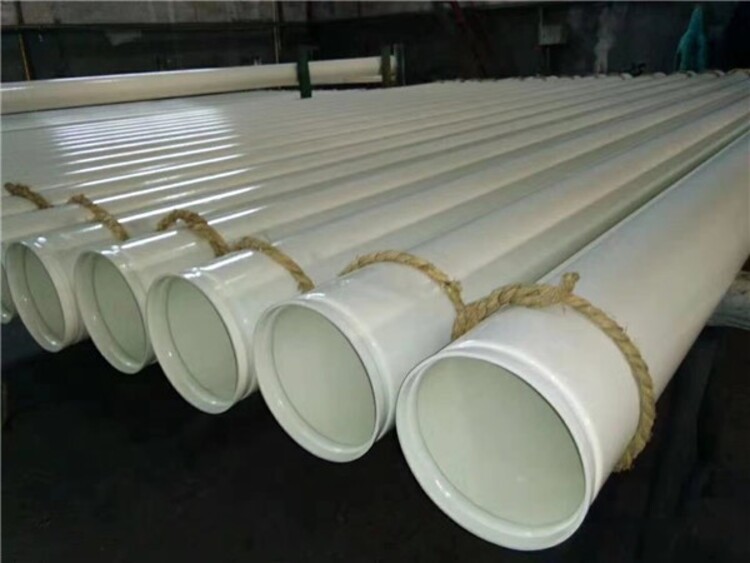
Coiled pipe is committed to producing all kinds of coiled pipes with circumferential seams and longitudinal rings and steel penstocks, and is transformed on the basis of similar specifications and models of traditional coiled pipe equipment. The function of improving the parameters of the rolling equipment by 30% fills the gap that the original traditional rolling equipment cannot produce. It can produce steel pipes with a diameter of more than 400 and a wall thickness of 8-100mm.
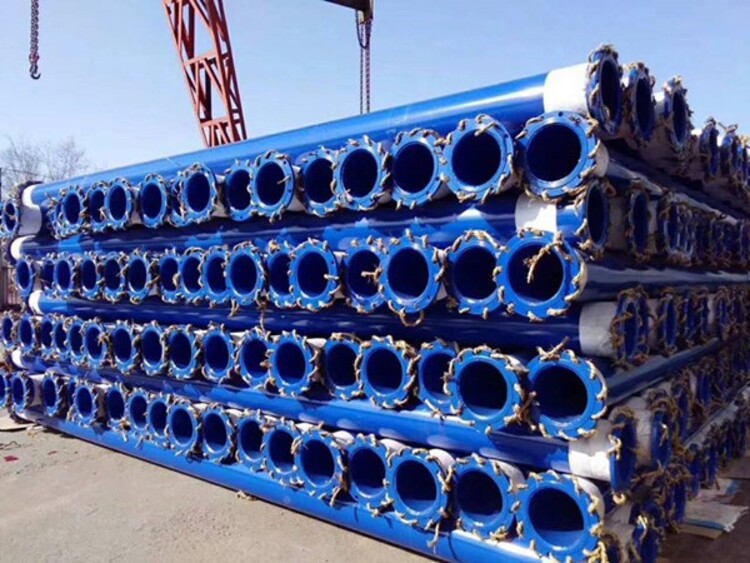
The main advantage of coiled pipes is that they can be used as non-standard steel pipes with super large diameter. Generally, the pipes with a diameter of more than 500 are mainly used as drainage pipes. The coiled pipe is mainly made of carbon steel, and generally it is a two-way weld, because there is no such large processing equipment for the width of the plate and the diameter required by the customer. It is generally a semi manual and semi mechanized processing process.

Hot dip galvanized straight seam welded pipe for steel plate coil threading is commonly used as the standard cold galvanized pipe. The amount of galvanizing is very small, only 10-50g/m2, and its corrosion resistance is much different from that of hot dip galvanized pipe. For the sake of quality, most of the regular galvanized pipe manufacturers do not use electro galvanizing (cold plating). Only those small enterprises with small scale and outdated equipment adopt electro galvanizing, of course, their prices are relatively cheaper. At present, the steel plate coiled pipe has been officially replaced. The cold galvanized pipe with backward technology will be eliminated, and it is not allowed to use the cold galvanized pipe as water and gas pipe in the future. The galvanized layer of cold galvanized steel pipe of steel plate coil is an electroplating layer, and the zinc layer is vertically layered with the steel pipe substrate. The zinc layer is thin and easy to fall off due to its simple attachment to the steel pipe substrate. The corrosion resistance of steel pipe is poor. It is forbidden to use cold galvanized steel pipes as water supply pipes in new residential buildings.
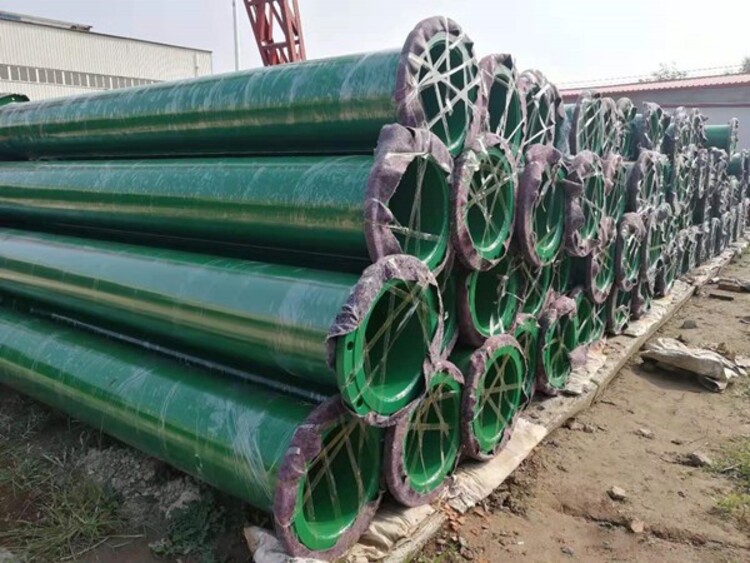
The company has three Lincoln spiral steel pipe production lines in the United States, which produce double-sided submerged arc spiral welded steel pipes with a diameter of φ 159 - φ 3050mm (wall thickness of 6mm - 20mm), with an annual production capacity of 150000 tons. The company has strong technical force and production equipment. Production of spiral pipe Spiral steel pipe Spiral welded pipe Specification thickness: 6mm - 20mm Diameter: 219mm - 3050mm There are several steel plate reelers Production specification thickness: 6mm - 70mm Diameter: 400mm - 5020mm Large diameter thick wall steel pipe Welcome to call for consultation and quotation, the product can be fixed length, the company is equipped with anti-corrosion processing plant to carry out anti-corrosion processing on the inner and outer walls of steel pipes, the outer wall of steel pipes mainly includes three oil and two cloth, five oil and three cloth, Epoxy coal tar pitch and epoxy resin paint, various polymer coatings. The inner wall of steel pipe mainly includes drinking water coating IPN8710-2B, cement mortar and various epoxy coatings.
Confirm the thickness of the steel plate before rolling the pipe, and the material meets the design requirements. Steel plate blanking shall be reasonable to reduce material waste. If oxyacetylene is used for steel plate cutting, the cutting port shall be cleaned. The steel plate groove shall be polished with an angle grinder. 2. When the steel plate is rolled, the die shall be made according to the pipe diameter. The installation of the plate rolling machine has been accepted, and the distribution box and cable must meet the requirements of the temporary electricity specification. If the electric hoist is used, it can only be used after passing the acceptance. The running noise of the plate rolling machine must be monitored. 3. When the coil is assembled, the coil shall be calibrated and the perimeter diameter shall be inspected. Use the hammer correctly, pay attention to noise during night construction, and do not affect residents. During pipe welding, the diffusion of smoke is critical, especially for the welding of the inner wall of the pipe, to ensure that the welder will not be poisoned by smoke in the pipe, and there must be good ventilation. Before construction. 4. See G235-97 specification for the circumference deviation and roundness deviation of the coiled pipe. 5. Pay attention to welding sparks when rolling pipe assembly and welding. Fire fighting equipment shall be equipped at the construction site. Arc light of electric welding shall be shielded and shall not damage the eyes of other personnel
Main products: spiral pipe, steel casing, steel plate, coiled pipe, welded steel pipe, nodular cast iron pipe, steel plate, angle steel, I-beam, H-beam, channel steel, etc








